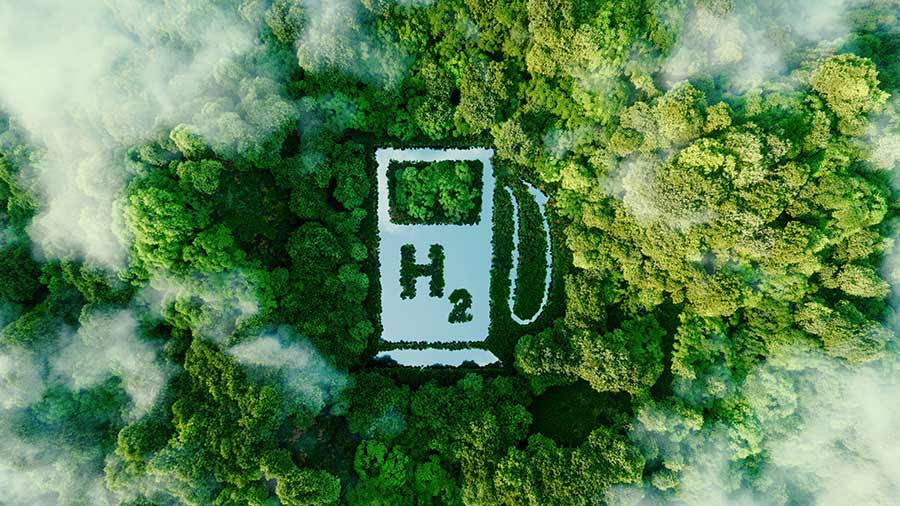India’s Green Hydrogen Policy: Economic Potential and Challenges
India’s ambitious climate goals and rising energy demands are reshaping the country’s energy landscape. One of the most promising frontiers in this transformation is green hydrogen—a clean fuel generated through the electrolysis of water using renewable energy. Recognizing its importance in ensuring energy security, reducing emissions, and enabling industrial decarbonization, the Government of India launched the National Green Hydrogen Mission in 2023.
This blog explores India’s green hydrogen policy, its economic potential, and the challenges that lie ahead as India aims to become a global hub for hydrogen production and export.
🔗 National Green Hydrogen Mission – Ministry of New and Renewable Energy (MNRE)
🌱 What Is Green Hydrogen?
Green hydrogen is produced by splitting water molecules using electricity generated from renewable sources like solar and wind. It differs from:
-
Grey hydrogen, which is made from natural gas without capturing emissions.
-
Blue hydrogen, which is produced from natural gas with carbon capture and storage (CCS).
The use of green hydrogen can significantly reduce CO₂ emissions in sectors like:
-
Fertilizer production
-
Refineries
-
Steel manufacturing
-
Heavy transport and shipping
🇮🇳 India’s Green Hydrogen Mission: Key Highlights
The National Green Hydrogen Mission, with an initial outlay of ₹19,744 crore (~$2.3 billion), sets ambitious targets to:
-
Produce 5 million metric tonnes (MMT) of green hydrogen annually by 2030
-
Create an associated renewable energy capacity of ~125 GW
-
Attract investments of over ₹8 lakh crore (~$96 billion)
-
Generate over 600,000 jobs
🔗 Mission Document – PIB India
The mission includes two components:
-
Strategic Interventions for Green Hydrogen Transition (SIGHT)
-
Financial incentives for domestic green hydrogen production and electrolyzer manufacturing.
-
-
Public-private partnerships, pilot projects, and R&D support
-
To encourage use in steel, shipping, and transport sectors.
-
💰 Economic Potential of Green Hydrogen in India
1. Energy Independence
India currently imports 85% of its oil and 50% of its natural gas. Green hydrogen can replace fossil fuels, particularly in industrial applications and mobility, reducing dependence on volatile international energy markets.
2. Industrial Growth and Export Opportunities
India’s green hydrogen industry could help:
-
Decarbonize steel, cement, and chemical sectors
-
Enable India to become a hydrogen export hub to countries like Japan, South Korea, and the EU, which are expected to become major importers.
🔗 India’s Hydrogen Export Potential – IEA Report
3. Job Creation and Innovation
The industry can create over 600,000 direct and indirect jobs and drive innovation in green tech, manufacturing, infrastructure, and transportation sectors.

🔋 Use Cases of Green Hydrogen in India
| Sector | Application |
|---|---|
| Fertilizer | Replace grey hydrogen in ammonia production |
| Oil Refining | Use for hydrocracking and desulfurization |
| Steel | Substitute coking coal in Direct Reduced Iron (DRI) |
| Transportation | Fuel for heavy-duty vehicles, trains, and shipping |
| Power Storage | Store excess renewable energy |
India is already seeing pilot projects like:
-
NTPC’s green hydrogen blending in natural gas networks in Gujarat
-
IOCL’s hydrogen-powered buses in Delhi
-
Adani and Reliance’s mega green hydrogen plans
🔗 Green Hydrogen Projects in India – NTPC
⚙️ Challenges Ahead
Despite the excitement, India faces significant barriers in its green hydrogen journey:
1. High Cost of Production
Green hydrogen in India currently costs ₹300–400/kg ($3.5–4.8), much higher than grey hydrogen (~₹150/kg or $1.8). This is mainly due to:
-
High cost of electrolyzers
-
Limited availability of low-cost renewable electricity
-
Lack of economies of scale
India aims to bring down costs to ₹100/kg ($1.2) by 2030.
2. Lack of Infrastructure
There’s a need for:
-
Dedicated hydrogen pipelines
-
Storage facilities
-
Transport and distribution networks
-
Refueling stations for hydrogen-powered vehicles
3. Technological Gaps
India currently imports most electrolyzer components. Boosting domestic manufacturing and R&D is crucial.
🔗 NITI Aayog Hydrogen Roadmap
4. Policy and Regulatory Uncertainty
While the central government is pushing forward, state-level policies, grid connectivity, and land acquisition need streamlining.
🧩 Private Sector Initiatives Driving Momentum
Major Indian conglomerates have entered the race:
-
Reliance Industries plans to become net carbon zero by 2035, with $10 billion investments in green energy and hydrogen.
-
Adani Group is building the world’s largest green hydrogen ecosystem.
-
Indian Oil, NTPC, JSW Energy, and Larsen & Toubro are launching pilot projects and electrolyzer manufacturing units.
🧭 Way Forward
India’s journey to becoming a global green hydrogen leader depends on:
-
Scaling up domestic electrolyzer manufacturing
-
Investing in R&D and innovation
-
Public-private collaboration for pilot projects and infrastructure
-
Incentivizing demand creation in hard-to-abate sectors
-
Building strong export logistics and port infrastructure
International collaboration through initiatives like the International Solar Alliance (ISA) and the Global Hydrogen Partnership will also be crucial.
🌎 Conclusion: Green Hydrogen as a Strategic Asset
Green hydrogen is not just an energy source—it is India’s ticket to energy independence, industrial competitiveness, and climate leadership. With the right policies, investments, and infrastructure, India could not only fulfill its domestic demand but also export clean energy to the world.
As the world races toward decarbonization, India’s green hydrogen push could shape the next decade of global clean energy transition.
📞 Looking to invest in India’s green energy revolution?
Let India-Agent.com help you identify local partners, navigate regulations, and access incentives for hydrogen and clean energy projects.
